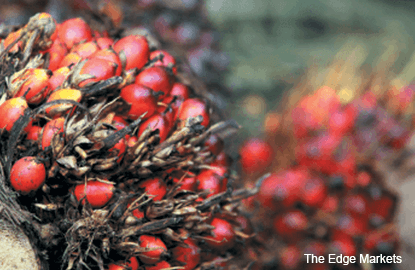
This article first appeared in The Edge Financial Daily, on 30 November, 2015.
BALI: The Indonesian Palm Oil Conference 2015 last week ended on a bullish note as many forecasters expected crude palm oil (CPO) prices to move up.

With the growing likelihood of an El Nino event, greater demand from Indonesia’s biodiesel mandate and slowing production growth, CPO prices are expected to go as high as US$800 (RM3,440) per tonne free-on-board (before export tax) next year.
LMC International Ltd chairman James Fry was the most optimistic with his forecast.
“A full El Nino drought would put more pressure on stocks,” he said, adding that the world would have to rely on soy oil to fill some of the shortfall in CPO supplies.
“If there is no 2016 El Nino, and if Brent [crude] settles at US$45 per barrel, CPO prices should be above US$600 per tonne by the end of the first quarter of 2016,” he added.
Respected forecaster Dorab Mistry, director of Godrej International Ltd, is expecting CPO prices to touch RM2,600 per tonne if the ringgit crosses 4.5 against the greenback.
He noted that this level will be difficult to sustain unless crude oil prices exceed US$60 per barrel. Crude oil typically sets the floor for CPO prices, beyond which the alternative use of palm-based diesel becomes economically viable.
For the half-year horizon, Thomas Mielke, executive director of ISTA Mielke GmbH Oil World, expects that CPO prices could reach about US$750 per tonne.
He expects production to stagnate at 33.6 million tonnes in 2016, thanks to a confluence of factors.
“The stagnation in production and [rising] exports as we are seeing for the next 12 months will have massive repercussions on the market,” Mielke said.
In 2014, Indonesia’s palm oil exports reached 21.76 million tonnes. This number is on the rise, evidenced by the 21.5 million tonnes already exported up to October 2015.
“The El Nino uncertainties and biodiesel mandates are going to be important,” he added.
The threat of an El Nino event has become apparent during the July to October dry spell, when 30% of Indonesia’s acreage saw rainfall halved, according to Mielke.
“The palms are severely stressed. The heavy rainfall in November helped, but it is not going to offset the July to October period,” Mielke said.
But the hot topic of the conference was really the impact of the recent Indonesia Estate Crop Fund (IECF), lauded to be a prime driver of CPO prices.
In July, Indonesia began imposing a levy on its palm oil exports that feeds the IECF, meant to develop Indonesia’s palm oil sector, particularly biodiesel.
The fund is expected to amount to US$700 million in 2016.
With the majority of the money to be injected into subsidising its biodiesel sector, the Indonesian government has also raised its biodiesel mandate for 2016 to B20 — a 20% palm methyl ester blend —from B15 now.
If fully executed, this is expected to push biodiesel demand in Indonesia to nine million tonnes next year, compared with just one million tonnes forecast for 2015.
Realistically, the nation will likely only meet the 2.5 million-tonne mark in 2016, he said.
But considering that production is not growing, Mielke does not think this is necessarily a good thing.
“The mandates are too high for 2016 and they cannot be met. They are insufficient to meet growing food demand,” he said.
“The ambitious biodiesel target in Indonesia should be reconsidered,” said Mielke.
He also pointed out that new plantings had slowed since the demise of the commodity boom in 2012, and thus supply is falling short of global needs.
He said global demand will reach 48 million to 50 million tonnes by 2025.
“We have a 0.45 million tonne surplus now and we are moving into a deficit,” said Mielke.
“We are not growing enough at this rate; we need extra plantings,” Mistry added.
As there is the possibility of demand for CPO exceeding supply, Mistry believes it is time to relook plantation equities.
“I believe palm equities should be bought now,” he said, emphasising downstream processing companies and those with their own consumer brands.
For Mistry, well-managed blue chips that pay good dividends are a safe bet.
CPO third-month futures rose RM21 to close at RM2,362 per tonne last Friday.